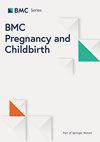在荷兰和苏里南的妇幼保健服务机构中实施集体护理:消除外部环境障碍的极端重要性
IF 2.8
2区 医学
Q1 OBSTETRICS & GYNECOLOGY
引用次数: 0
摘要
通过满足生理和心理需求,集体护理(GC)可改善与健康有关的行为、同伴支持、父母与提供者之间的互动,并可改善分娩结果。因此,我们鼓励在全球范围内实施集体护理。实施前的背景分析对于阐明哪些当地因素可能支持或阻碍实施至关重要。我们比较了在荷兰和苏里南进行的背景分析,以确定医疗保健专业人员(HCPs)认为与 GC 可实施性相关的因素。对荷兰和苏里南的医疗保健专业人员进行了 32 次半结构化访谈。采用框架法对录音进行逐字转录和编码。实施研究综合框架指导了访谈指南和编码树的制定。外部环境:两个国家都出现了对资金的担忧。在苏里南,由于医疗保险覆盖面有限,额外的费用会限制医疗服务的可及性。在荷兰,助产士担心由于报销政策倾向于一对一护理而导致收入减少。内部环境:荷兰的一家医疗机构和苏里南的三家医疗机构都没有适当的空间来实施产前保健。与苏里南相比,荷兰在实施 GC 方面的角色分工更为明确。创新:两国的保健医生都期望增加社会支持、妇女的健康知识和护理的连续性(r)。个人/创新实施者:在这两个国家,自我效能感和积极性是实施全球儿童疾病防治的相互交织的决定因素。个人/创新接受者:在这两个国家,相互竞争的需求可能会降低对 GC 的接受程度。荷兰的保健医生优先考虑与母亲进行公开对话,而苏里南的保健医生则鼓励纳入合作伙伴。过程:建议开展提高对 GC 认识的运动。荷兰的保健医生担心语言障碍,而苏里南的保健医生则不担心。虽然两国之间最显著的差异出现在外部环境中,但这些差异会渗透并影响到所有层面。最终,在稍后阶段,过程评估将显示我们在实施前发现的外部环境障碍是否真正阻碍了全球合作的实施。对医疗保健系统的改革将确保在这两个国家的持续实施,而这一结论也会引出一个更具普遍性的讨论:当背景分析揭示的障碍无法用现有的时间和资源来解决时,该如何着手。本文章由计算机程序翻译,如有差异,请以英文原文为准。
Implementing group care in Dutch and Surinamese maternity and child care services: the vital importance of addressing outer context barriers
By addressing physical and psychosocial needs, group care (GC) improves health-related behaviours, peer support, parent-provider interactions and may improve birth outcomes. Hence, global implementation of GC is encouraged. Context analyses prior to implementation are vital to elucidate which local factors may support or hinder implementation. Contextual analyses conducted in the Netherlands and Suriname were compared to identify the factors relevant to the implementability of GC as perceived by healthcare professionals (HCPs). 32 semi-structured interviews were conducted with Dutch and Surinamese healthcare professionals. Audio recordings were transcribed verbatim and coded using the Framework approach. The Consolidated Framework for Implementation Research guided the development of the interview guide and of the coding tree. Outer setting: Concerns regarding funding surfaced in both countries. Due to limited health insurance coverage, additional fees would limit accessibility in Suriname. In the Netherlands, midwives dreaded lower revenue due to reimbursement policies that favour one-on-one care. Inner setting: Appropriate space for GC was absent in one Dutch and three Surinamese facilities. Role division regarding GC implementation was clearer in the Netherlands than in Suriname. Innovation: HCPs from both countries expected increased social support, health knowledge among women, and continuity of care(r). Individuals/innovation deliverers: Self-efficacy and motivation emerged as intertwined determinants to GC implementation in both countries. Individuals/innovation recipients: Competing demands can potentially lower acceptability of GC in both countries. While Dutch HCPs prioritised an open dialogue with mothers, Surinamese HCPs encouraged the inclusion of partners. Process: Campaigns to raise awareness of GC were proposed. Language barriers were a concern for Dutch but not for Surinamese HCPs. While the most striking differences between both countries were found in the outer setting, they trickle down and affect all layers of context. Ultimately, at a later stage, the process evaluation will show if those outer setting barriers we identified prior to implementation actually hindered GC implementation. Changes to the health care systems would ensure sustained implementation in both countries, and this conclusion feeds into a more general discussion: how to proceed when contextual analyses reveal barriers that cannot be addressed with the time and resources available.
求助全文
通过发布文献求助,成功后即可免费获取论文全文。
去求助
来源期刊

BMC Pregnancy and Childbirth
OBSTETRICS & GYNECOLOGY-
CiteScore
4.90
自引率
6.50%
发文量
845
审稿时长
3-8 weeks
期刊介绍:
BMC Pregnancy & Childbirth is an open access, peer-reviewed journal that considers articles on all aspects of pregnancy and childbirth. The journal welcomes submissions on the biomedical aspects of pregnancy, breastfeeding, labor, maternal health, maternity care, trends and sociological aspects of pregnancy and childbirth.
 求助内容:
求助内容: 应助结果提醒方式:
应助结果提醒方式:


